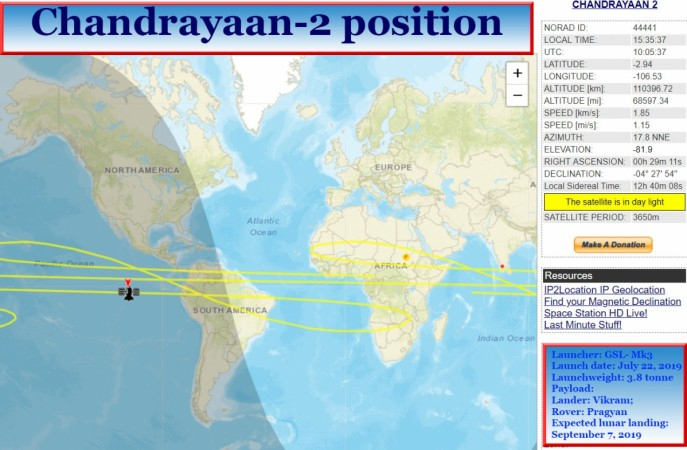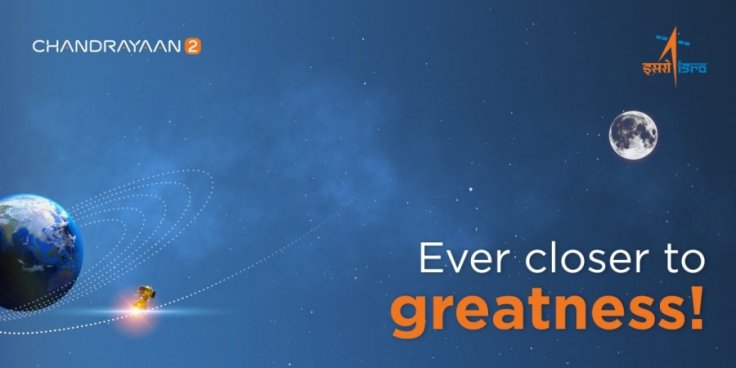
Indian space engineers will have a tense time until August 20 when the Moon Mission Chandrayaan-2 that was set on a course to leave the Earth gravitational field early on Wednesday gains lunar orbit. Indian Space Research Organisation (ISRO) engineers pushed Chandrayaan-2 out of the Earth orbit setting a straight translunar trajectory at 2:21 am.
The engineers had little time to catapult the 3.8-tonne spacecraft carrying the lander, Vikram, and the rover, Pragyan, out of the earth orbit by firing its motors for 1,203 seconds, the longest since its launch.
Experts say the split-second precision is crucial as the spacecraft had to be closest to effectively command it to set it on the translunar course. Chandrayaan-2 that has been going around the earth in an elliptical orbit taking it as far away from the Earth (apogee) as 1.43 lakh km came as close as 276km (perigee) when its liquid propellant motors were fired, ISRO said on its website. Wednesday's was the sixth and last of the Earth-side orbit manoeuvres of Chandrayaan-2.

The spacecraft needs to use the momentum to break free of the Earth's gravitational pull and travel as far as about 3.84 lakh km to reach the lunar orbit. ISRO engineers will then fire the motors of the spacecraft again to slow it down so that it gets caught in the lunar orbit. The spacecraft's travel course needs to intersect the Moon's orbit around the Earth at the precise point for the capture to be trouble-free, according to experts. If the momentum of the spacecraft is more than optimal for the capture, it is at the risk of escaping the Moon's gravitational pull and being lost forever.
"Today (August 14, 2019) after the Trans Lunar Insertion (TLI) manoeuvre operation, #Chandrayaan2 will depart from Earth's orbit and move towards the Moon (sic)," ISRO said in a tweet.
Initially, Chandrayaan-2 will be in an elliptical orbit around the Moon getting as close as 118km to the lunar surface at the closest point and as far as 18,078km at the farthest point. ISRO will undertake four-orbit manoeuvres to progressively give the orbit a circular form with the final one intended on September 1 expected to put it on an orbit with 114km perigee and 128km apogee. The lander, Vikram, is expected to separate from the mothership a day later and brought closer to the lunar surface with two orbit-lowering manoeuvres, a report in The Hindu said. ISRO says Vikram will make a powered landing on September 7 and soft-land on the lunar south pole. It will be creating history by making India the first nation to land on the so-far unexplored part of the Moon.
ISRO's most powerful rocket GSLV-Mk3 placed Chandrayaan-2 on the geostationary transfer orbit of about 35,000km minutes after it took off from the Satish Dhavan Space Centre at Sriharikota on July 22. A series of orbit-raising manoeuvres put the spacecraft.
The health of the spacecraft is being "continuously monitored" from the Mission Operations Complex (MOX) at ISRO Telemetry Tracking and Command Network (ISTRAC) with support from Indian Deep Space Network (IDSN) antennas at Byalalu, near Bengaluru, space said. ISRO chairman K Sivan has said all systems of the spacecraft have been functioning as expected since its injection into the Earth orbit.








